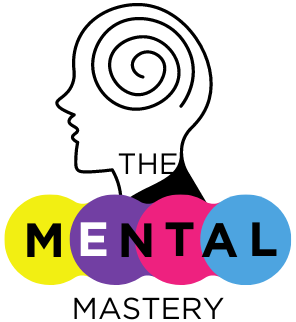The Psychology Behind Trauma Bonding: Why It Happens and How to Heal
Introduction
A psychological phenomenon known as trauma bonding happens in relationships that are marked by extreme emotional highs and lows, frequently leading to a strong attachment to a toxic or abusive partner. This complex relationship can have a serious negative effect on mental health by trapping people in an endless cycle of affection and harm. People can regain control of their lives and develop healthy relationships by understanding the basic principles of trauma bonding and investigating healing pathways.

Understanding Trauma Bonding
Trauma bonding typically arises in relationships where one partner exerts control through intermittent reinforcement—alternating periods of kindness and abuse. This cycle creates a powerful emotional dependency, as the moments of affection are perceived as relief from the pain, making the victim more attached to the abuser. Such dynamics often emerge in abusive romantic relationships, parent-child dynamics, and even workplace environments.
One important factor is the body’s reaction to trauma. Stress chemicals like cortisol and adrenaline can intensify feelings, strengthening the connection. It might be difficult to leave an abusive relationship since the brain can eventually begin to associate it with survival (Schauer & Elbert, 2015). Recognizing the causes of trauma bonding and how deeply established it can become in the victim’s brain requires an understanding of this psychological interaction.
Why Trauma Bonding Happens
1. Biological Conditioning
Trauma bonding is deeply tied to the body’s stress response. The brain’s reward system, influenced by dopamine, is activated during positive moments, while cortisol dominates during abusive episodes. This combination creates a cycle of anticipation and relief, leading to dependency (Askovic et al., 2023).
2. Cognitive Dissonance
Victims often experience cognitive dissonance, a mental conflict arising from holding contradictory beliefs about the abuser. They rationalize the abuse to reconcile their feelings of love and loyalty, further entrenching the bond (Schauer & Elbert, 2015).
3. Fear and Dependency
Fear of abandonment or retaliation can trap individuals in the relationship. The abuser may exploit vulnerabilities, such as financial dependence or low self-esteem, to maintain control.
4. Cultural and Social Factors
Cultural norms and societal expectations may also perpetuate trauma bonding. For example, stigmas around leaving a marriage or familial obligations can pressure victims to remain in toxic relationships.
Healing from Trauma Bonding
Breaking free from trauma bonding requires a multifaceted approach that addresses both the psychological and physiological impacts. Here are some evidence-based strategies for healing:
1. Awareness and Education
Understanding the mechanics of trauma bonding is the first step. Education helps victims recognize the patterns of abuse and the psychological traps that sustain them (Murray et al., 2022).
2. Therapeutic Interventions
Trauma-Focused Cognitive Behavioural Therapy (TF-CBT): This approach helps individuals process traumatic memories and develop healthier coping mechanisms (Mannarino et al., 2014).
Acceptance and Commitment Therapy (ACT): ACT encourages victims to focus on their values and goals, reducing the power of traumatic memories over their lives (McLean & Follette, 2016).
3. Building a Support System
A robust support network of trusted friends, family, or support groups can provide emotional stability and practical assistance during recovery.
4. Grounding Techniques
Grounding exercises, such as sensory grounding and mindfulness, can help victims stay present and manage overwhelming emotions during triggering situations (Schauer & Elbert, 2015).
5. Setting Boundaries
Learning to establish and maintain healthy boundaries is crucial for preventing re-entry into abusive dynamics.
Trauma Bonding and Mental Health
Trauma bonding has significant effects on mental health. PTSD, anxiety, depression, and low self-esteem are among the symptoms that victims may encounter. These consequences highlight how crucial prompt intervention and comprehensive mental health support are.
PTSD and other trauma-related disorders may be treated with neurofeedback, an innovative treatment that controls brain activity. Without needing people to relive their trauma, neurofeedback can help regulate the brain’s stress response system by altering brainwave patterns (Askovic et al., 2023).
Conclusion
A complicated and deeply rooted psychological reaction, trauma bonding can make people feel helpless and trapped. However, it is possible to get out of the pattern of abuse and rebuild a life based on respect for oneself and healthy relationships if one has awareness, professional assistance, and appropriate treatment options. Empowering victims with information and tools is essential to promoting long-term resilience and healing.
We can assist people on their path to recovery and mental health by addressing the underlying causes and advocating evidence-based practices. Not only is it possible to heal from trauma bonding, but it is also evidence of the human spirit’s capacity for development and change.
References
Askovic, M., et al. (2023). The efficacy of neurofeedback in treating PTSD. Journal of Clinical Psychology.
McLean, C., & Follette, V. M. (2016). Acceptance and commitment therapy for trauma survivors. Journal of Trauma & Dissociation, 17(2), 138–150.
Mannarino, A. P., Cohen, J. A., & Deblinger, E. (2014). Trauma-focused cognitive-behavioral therapy: Evidence-based approaches. Springer.
Murray, A., et al. (2022). Cognitive processing therapy for PTSD: A meta-analysis. Journal of Affective Disorders.
Schauer, M., & Elbert, T. (2015). The psychological impact of trauma. Journal of Trauma Studies.







